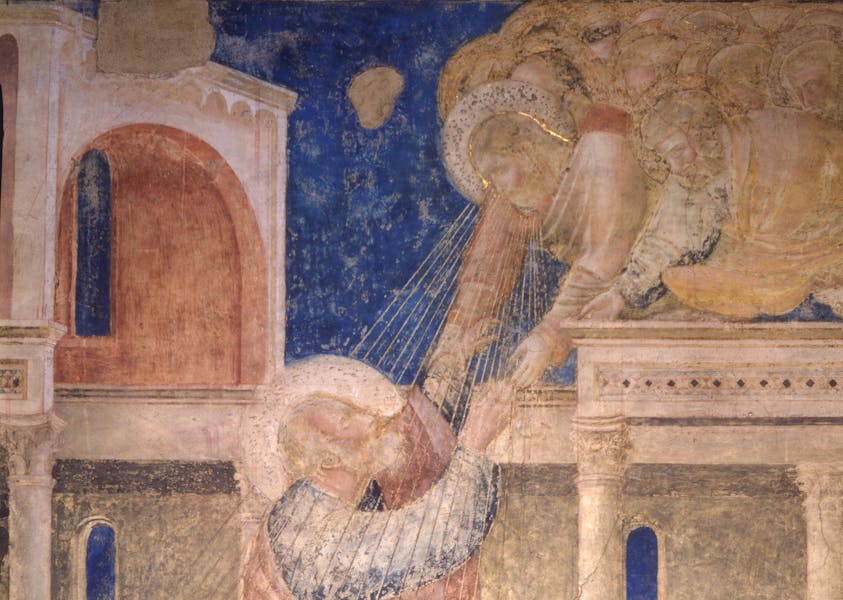
Peruzzi Chapel
Built during the earliest phase of the present church's construction, the chapel was under the patronage of the Peruzzi, a family of wealthy bankers who lived in the neighbourhood. Playing an active role in the city's political life, they were granted patronage of the second chapel closest to the high altar, a position held to be an immense privilege.
The Peruzzi family commissioned Giotto to decorate the chapel with murals whose date is still uncertain but which were probably painted c. 1310. Facing each other across the chapel are Stories from the Lives of St. John the Baptist and St. John the Evangelist to whom the chapel is dedicated. The vault is decorated with the symbols of the four Evangelists, and eight busts of prophets adorn the intrados of the arch, but all that remains of the decoration on the back wall is a fragment with the Mystic Lamb.

The cycle is some of Giotto's earliest work in Santa Croce and the only known example of murals by the artist painted almost entirely on a dry ground, a technique which does not help to preserve the painted surface. That is certainly one of the primary causes of the murals' deterioration, but they were also heavily whitewashed over in the 18th century before being restored by Antonio Marini from 1841 to 1848 and by Francesco Pezzati from 1861 to 1863. This was the age of the Risorgimento which saw Giotto as the founding father of Italian figurative culture, but the restoration was to prove damaging because mechanical cleansing and the use of chemical solvents damaged Giotto's work and caused irremediable loss. This was followed by further, equally unsuccessful attempts at restoration, until Leonetto Tintori eliminated everything that had been added to Giotto's original work in 1958. The Opificio delle Pietre Dure restored the murals successfully between 1983 and 1985, and subjected them to a major diagnostic campaign in 2009–10.
The original design also included a stained-glass window, and an altarpiece now in the North Carolina Museum of Art in Raleigh. Its place has been taken by a panel painting by an anonymous 14th century artist close to Bernardo Daddi depicting the Madonna and Child with St. John the Evangelist and a Sainted Bishop, while the original stained-glass window has been replaced (as we can see from the crest at the top) by the window from the Giugni Chapel attribued to Pacino di Bonaguida. The tomb of Vicenzo Peruzzi, Gonfaloniere of Florence, on the right-hand wall was carved by Odoardo Fantachiotti between 1847 and 1860.